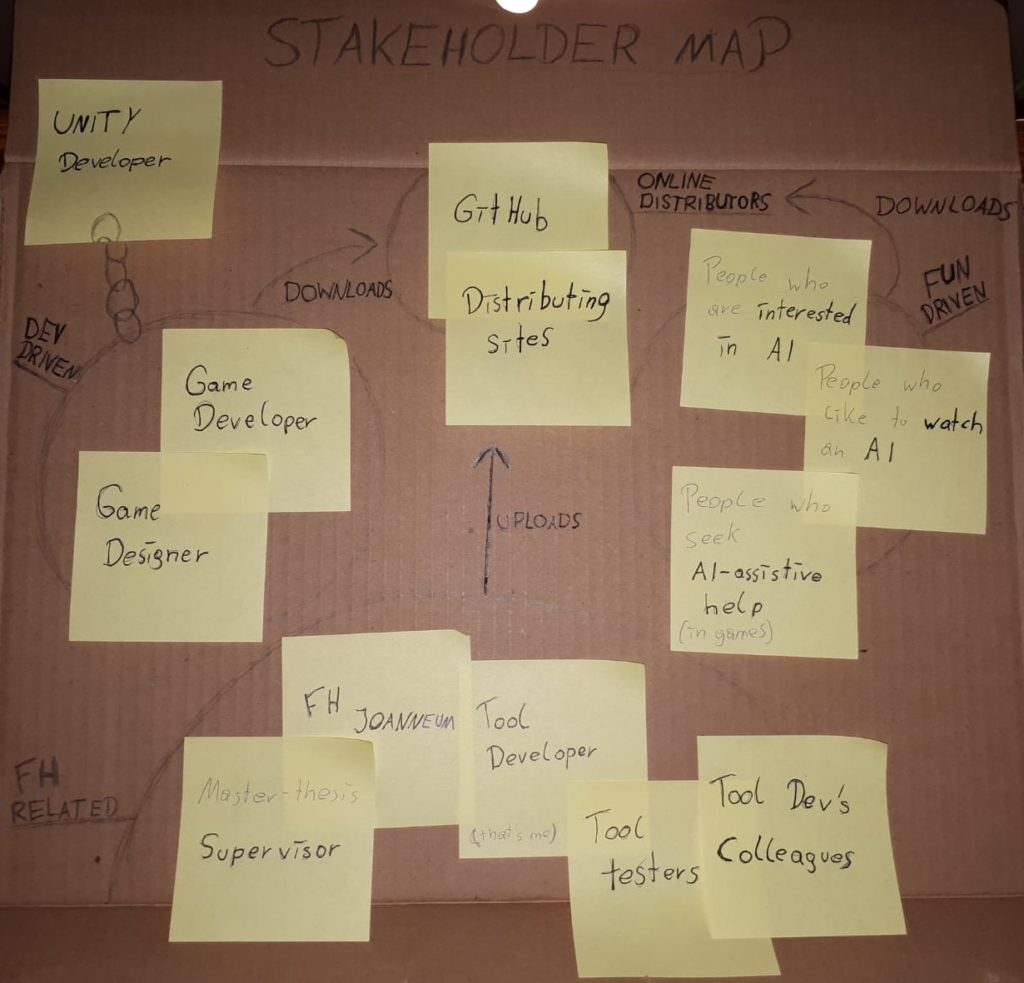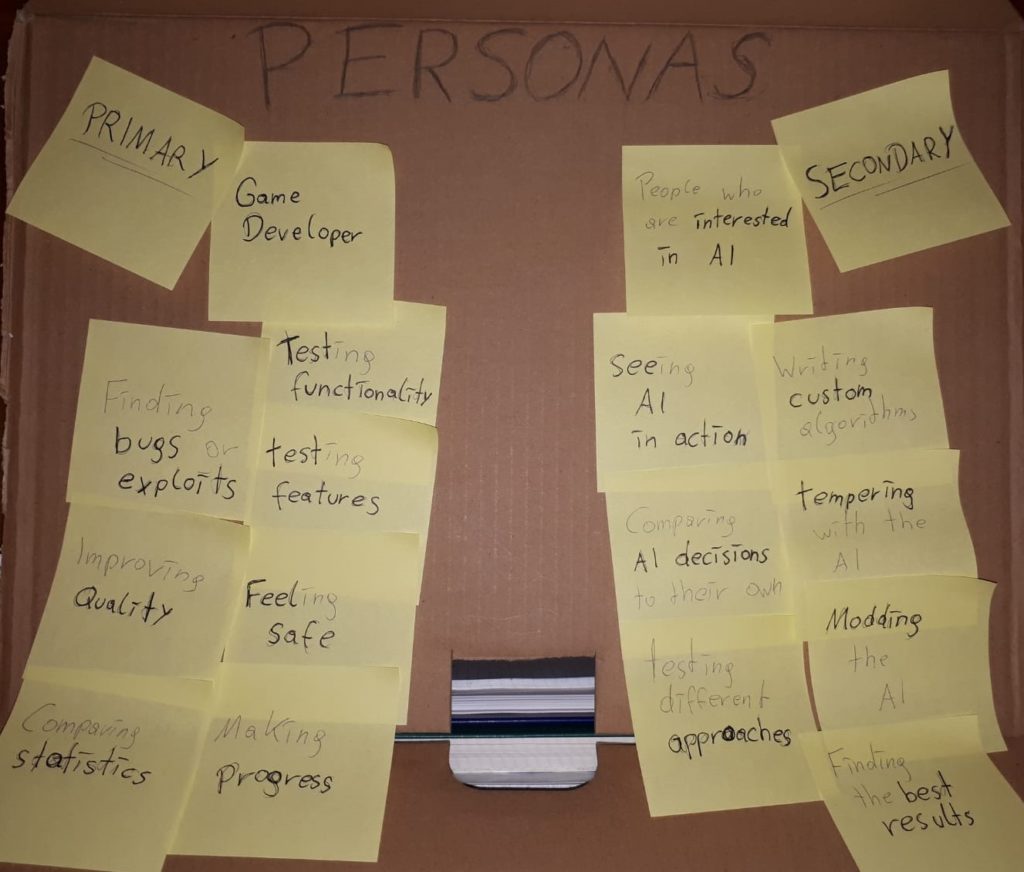In the previous blog I shared my first thoughts about the tool I aim to develop, including the most probable target groups and the biggest issues that may arise for them. To get a clearer image of the situation, I will use three design methods that will specify the target groups and their needs.
In this blog, I introduce tools – a stakeholder map, a persona and a project rundown.
Stakeholder Map
Stakeholder mapping is the visual counterpart to a stakeholder analysis. It helps associating target groups to some key criteria, which may be used in future project management. These criteria may include interest, influence, financial stake or emotional stake. This can be done on a grid or in a spreadsheet – or with post-its, on paper. (cf. [https://www.smartsheet.com])
I attempted to create a basic overview, as shown in Figure 1. There are four main clusters of stakeholders:
- The „FH Related“ cluster represents my main work environment and everyone affected within it.
- The „Online Distributors“ cluster represents the websites that make the tool available to everyone.
- The „Development driven“ cluster represents the primary persona, which are also connected to Unity.
- The „Fun driven“ cluster represents the secondary persona.

Personas
Based on the stakeholder map, personas may be created – fictional characters that share common characteristics of certain target groups. Good personas include the users’ needs, experiences, behaviours and goals.
A persona represents the user from a different perspective. Creating several personas may reduce the complexity of the design task at hand; they help during ideation processes and they may easen the way of creating a good user experience. (cf. [https://www.interaction-design.org])
I took the most important users from the stakeholder map and created their personas, as shown in Figure 2. I chose game developers as the primary persona and AI interested people as secondary because I envisioned this tool to be a testing tool in the first place, and an entertainment program in the second.
When I created the overview, I thought about the most important needs of both sides. The needs of a game developer differ greatly from the needs of people who are interested in AI – the only thing that came to my mind that would satisfy both are some kind of statistics that serve analyzing purposes, which will influence the future pen & paper prototype.

Project Rundown
A project rundown is a short description of the project. It is typically formulated in a way that everyone can understand the main contents of the project. It serves as a guiding thread.
The user is a game developer.
I will improve his or her game’s UX process.
Which, in terms a 5-year-old would understand, is making sure everything works as expected.
Currently the developer struggles because a new feature may cause bugs in the game.
It*s like a stick the blocks a machine’s mechanism.
In a perfect world, he or she should be able to test all of a game’s features over night, while sleeping.
This would be great for the developer because he or she saves time finding bugs and has an idea how a real player would perform.
Sources
[https://www.smartsheet.com]
Definitions: What Are Stakeholder Analysis and Stakeholder Mapping? https://www.smartsheet.com/what-stakeholder-analysis-and-mapping-and-how-do-you-do-it-effectively (23/12/2019)
[https://www.interaction-design.org]
Personas – A Simple Introduction: https://www.interaction-design.org/literature/article/personas-why-and-how-you-should-use-them (23/12/2019)